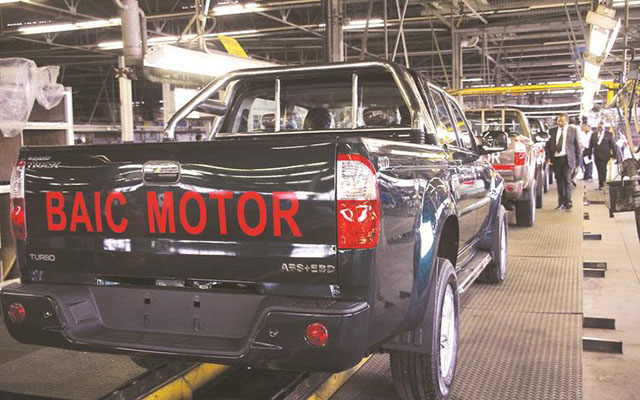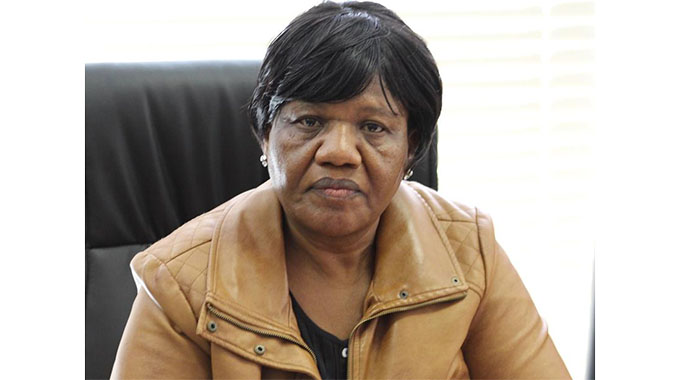My father, colonial education, Anglicanism

Sekai Nzenza On Wednesday
It’s 3.45 am at Mufudzi Wakanaka School on a Sunday morning. There are more than 300 mostly middle-aged women and grandmothers with walking sticks. Almost all the women are dressed in Anglican uniforms with various motifs.
The older women are wearing their Anglican uniforms, blue skirts, white blouses with blue collars and blue doeks or head scarfs. The uniform shows that they belong to the Anglican Mothers’ Union.
This is the Anglican Diocese of Masvingo, which stretches from further down south to Mufudzi Wakanaka, or The Good Shepherd School. Mufudzi, as it is popularly known, sits near the banks of the Save River and it is the last one to represent the Anglican churches in the Masvingo Dioceses.
I am here to participate in the Lady’s Day conference as well as celebrate the part played by my parents in bringing Anglican Christianity to this very scenic place. Mufudzi Wakanaka Church is built on a high hill near Save River across from Hwedza, Romorehoto and Nyangarire mountains.
Most of the schools at the gathering of women here have an Anglican name, then a Shona name. There is St Clara Svinurai, St Faith Mudoti, St Cecilia Mushipe, St Helena Nzuma, St Columbus Jeche, St Judes Chimowa and then Mufudzi Wakanaka or The Good Shepherd Church, no saint before this name.
Mufudzi Wakanaka School and church was built by my father in 1947. It was the first school in the area, with a grass thatched school and church. The house that he lived in with my mother is still standing and occupied by a young lady, recently graduated from Mkoba Teachers College. Four of my older siblings were born here.
We are all sitting on the old foundation of the school built by my father. In my handbag I have brought along a photo of my father taken in 1948, where he sits on a chair, with a desk in front of him, wearing an open white shirt, black jacket, cream or khaki pants and black shoes.
Behind him is a mud brick thatched classroom block with two entrances and big open arch windows. At the back of the photo, my father wrote that the building was that of a school he had built.
He signed his initials and name in ink with these words below: “Head teacher, Mufudzi Wakanaka School, Chikoro chandakavakisa Enkeldoorn S. Rhodesia.” Except for small scratches and some fading, the photo is clear.
Over the years, there have been times that I think my father was an African colonialist because he was a teacher and clergyman for the Anglican missionaries.
Here, at the Mufudzi Wakanaka School, my parents’ role in supporting the propagation of the gospel and the promotion of civilization has presented a certain personal ambivalence.
Back in the village, when we were growing up, the conflicts between my father and his mother Mbuya VaMandirowesa, were always related to my father’s adoption of new way of living relating to education, immunisation, food, dress and many other aspects of spirituality.
But my mother seemed to move easily between traditional religion and Anglicanism without much effort. And yet she played a significant part in the Mother’s Union at Mufudzi Wakanaka School in the early 1950’s. Many elderly men and women still remember her as the leader of the Mother’s Union.
Despite my ambivalence with joining a Christian church, I have expressed an interest in joining the Mother’s Union so that I can maintain the legacy of my parents and the education they were able to provide to both men and women of Mufudzi.
Last Saturday night, during the all-night Lady Day celebration, the pastor’s wife takes me to meet the Bishop’s wife, Mrs Albertina Taonezvi, who is sitting right in the front, in a separate tent built for dignitaries.
The rest of the women are out there in the open. Mai Taonezvi is a beautiful woman and she introduces me to the steps required in order to gain membership into the Mother’s Union.
She describes the number of materials that can be bought and sewn into uniforms. One of Mai Taonezvi’s assistants nearby quickly tells me that she has a whole suitcase full of materials at $7 per metre
“If you do not have cash with you, EcoCash is also possible, especially in the late hours of the morning when network is not so busy,” she says.
In order for me to be allowed to wear the cloth, bhachi reruwadzano, I am told that I must memorise the prayer of Mary Sumner by heart. I go back to the car to read my new booklet on prayers.
I try to half heatedly memorise the prayer of Mary Sumner in the car. In the back seat is my cousin, Piri, drunk and snoring. She is not an Anglican. I shake her and tell her to stop snoring because I need to concentrate on memorising the prayer of Mary Sumner. “Aimbove aniko Mary Samunari wacho?” Piri asks. Who was Mary Sumner?
I then google Mary Sumner’s name. She was born in 1828 near Manchester and she married a clergyman called George Sumner. Then they lived near Old Alresford in the UK. When she became a grandmother, she was concerned about the way local mothers practised their Christian faith.
She therefore founded a small group called the Mothers’ Union. Its main aim was to promote and strengthen Christian family life.
For a few years, the Mothers’ Union remained small. However, it grew rapidly after the 1885 national Church Congress where Mary Sumner addressed the participants and “focused on the two ideas central to her Mothers’ Union group: being a good example to children, and keeping prayer central to the life of the family”.
Her speech was supported by Bishop of Winchester, Harold Browne, who recommended that a Mother’s Union should spread through the Diocese. Within a few years, the Mother’s Union grew rapidly in Britain and right across the colonised countries of the Commonwealth.
Mary Sumner became the international president in 1896, just at the time when this country was going through the First Chimurenga fight against colonial rule.
Mary’s profound work in the Mother’s Union continued to spread in Rhodesia and everywhere across the Empire right up to the time of her death in 1921.
She is buried outside Winchester Cathedral. Mary witnessed the growth of the Mother’s Union from a small group to a worldwide organisation with millions of members who still recite her prayer today.
My parents were married at Daramombe Christ, the King Mission in 1947. They were assigned to go back to a remote place in our village and start a church and a school. My father named the school Mufudzi Wakanaka, after convincing the missionaries that such a name was very much Christian, because it meant The Good Shepherd.
It was only a question of translation and there was nothing uncivilised or native about the name. The missionaries accepted and the church and school have kept that name up to this day. The church has also maintained the annual Lady’s Day celebrations which are held across the Diocese.
The Lady’s Day at Mufudzi Wakanaka church finished at the odd hour of 4:30 am. Many women from faraway left in the hired kombis. But some of us from around the area stayed for sweet tea and bread with jam.
One of the old ladies called Mai Mudawarima recognises the facial resemblance with my father. She tells me that she used to look after my four older siblings around 1955, before I was born, while my mother went around the village teaching the women the values of the Mother’s Union.
My father would teach the young boys and girls to read while my mother helped women (who could not read) memorise the prayers and Catechism. These readings were and are still compulsory for the women who want to be confirmed in the Anglican Church, kugadzwa.
As we left Mufudzi Wakanaka School on Sunday morning, one old lady waved frantically for a lift.
I stopped and let her in. She said she was Mai Murenje, born in 1945, educated by my father, baptised and received, kugamuchirwa by my mother at Daramombe Mission in 1957.
“Your father taught me English,” she proudly said. “I can still read the Bible and I can write letters.”
I realised that colonial education and Christianity was not, in itself, something we should look back at and view with regret. No. We have benefited from this historical occurrence.
However, we cannot forget that there were very few of us who were able to access education. The colonial system limited the number of children who could go past primary education.
Although Anglican missionaries promoted education for Africans, we cannot forget that Anglicanism worked very closely with the colonial government and that dispossession and racism was part of the package.
Still, we celebrate the memories, and the unity that remain because a school and a church were built at Mufudzi Wakanaka, in this beautiful isolated mountainous part of Zimbabwe.
Dr Sekai Nzenza is a writer and cultural critic.











Comments